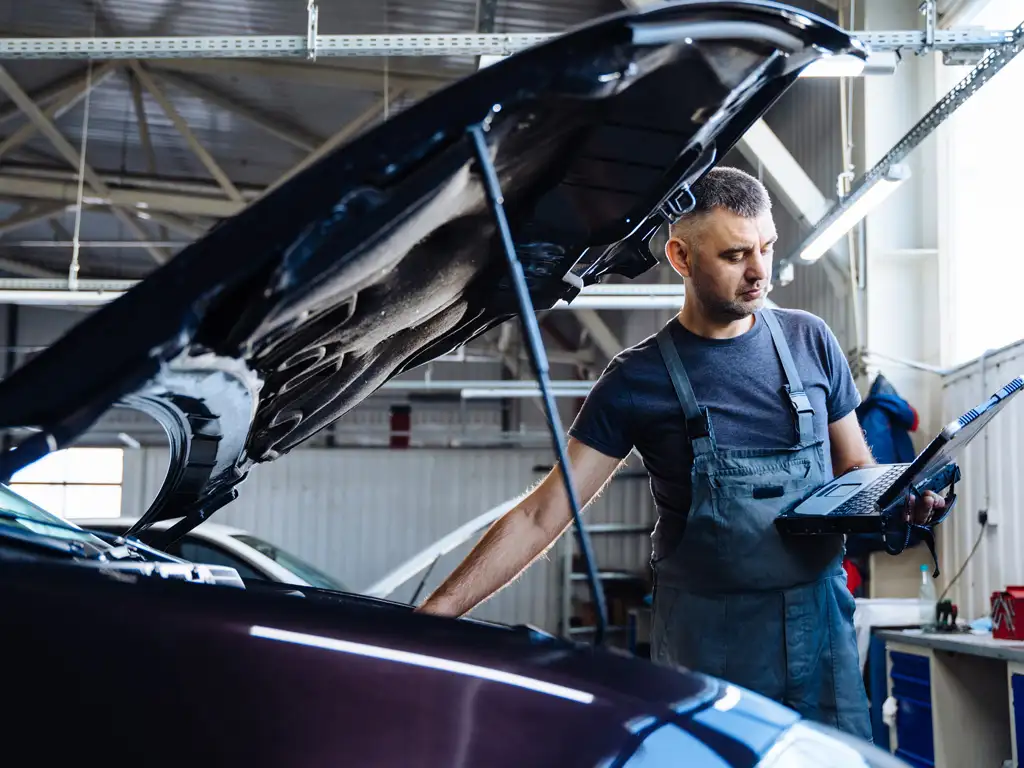Electric car inspection: what is worth knowing?
Electric cars – up to 50,000 km without inspection!
An electric car, despite its specific design, also requires servicing – just like a combustion car. ROTINGER, a manufacturer of the highest quality brake discs, reminds us of this obligation and points to those components that wear out noticeably over the miles.
Electric car inspection: what is worth knowing?
In this article:
Braking system
Suspension
Cooling system
Air conditioning
Electrical connections
Seals
Users of electric cars are very liberal when it comes to regular servicing. Some people care for them the same way they care for combustion vehicles. Others, on the contrary. Because they don’t have to change oil or timing, they don’t visit workshops for years. A person who buys such a used car may be very surprised to see that the last entry in the service book was, for example, 50,000 kilometers ago.

Braking system
Extending service intervals negatively affects the condition of the braking system. In fact, brake pads in electric cars wear out slower than in combustion vehicles, but this does not mean that the entire system does not require maintenance. On the contrary. The real problem here is seizing of moving parts and corrosion. In practice, it looks like this, depending on the style of use, even after 20-30 thousand. km. quite decent brake pads must work with a heavily corroded brake disc, and in addition, they do not adhere properly to it, with the entire surface, because somewhere along the way they may be blocked by a stuck guide.
ROTINGER recommends regular servicing of the braking system – e.g. every 20-30 thousand km. km, careful cleaning of the entire system, checking the operation of moving elements and replacing the discs if they are heavily corroded.
We would like to remind you that the offer of ROTINGER brake discs for the eV segment includes:
- high quality materials and maximum (within technological limits) corrosion protection
- adapting materials to the increased average weight of electric vehicles
- optimized friction surfaces for operation under high loads (emergency braking, braking on mountain descents, highway braking).
- very attractive prices
Suspension
Another problem, or rather a symptom of normal use, is the wear of suspension elements. It turns out that the electric drive system loads the chassis even more than the traditional combustion one. The problem is the high weight of the vehicle, but not only that. It turns out that a very big challenge is the high torque generated by the electric motor – it drastically accelerates the wear of axle shafts and joints.
Generally, after 50-80 thousand. km, in most electric vehicles, the wishbones, shock absorbers, steering components and the mentioned drivetrain transmission elements – axle shafts, joints and bearings – need to be replaced.
Cooling system
Extremely important for the efficient operation of every electrician is its cooling system, and often even two systems. The first one is responsible for cooling the electric motor. The second one is for maintaining the appropriate temperature of the battery pack. Of course, not all electric cars have both of these systems and not all of them work on the same principle. However, it is extremely important that they are operational, because overheating or underheating leads to the degradation of expensive electrical and electronic systems, and sometimes also to emergency shutdown of the vehicle.
Air conditioning
Not everyone realizes that in some electric models the air conditioning must be functional, because in the summer it serves as emergency, additional cooling for the battery pack. This is exactly the solution we find in some Tesla models. Air conditioning – to work efficiently, it must be serviced at least once a year – this involves detecting possible leaks and replenishing/maintaining the refrigerant.
Electrical connections
A very large number of electric car failures result from wear and tear of electrical connections. The section most exposed to wear is the section from the power connector to the charger built into the car, or to the batteries. The connections “to ground”, the connections between the battery pack and the engine, and the low voltage circuit also wear out. During regular inspections, most of these types of faults can be detected and eliminated in time.
Seals
The last important issue is diagnostics and leak detection. They appear on the cooling, braking and power steering circuits. The problem is not only leaks and losses of fluids, but also the risk that fluids will get where they should not and cause corrosion of sometimes very expensive components.
ROTINGER brakes – the optimal solution for electric car owners. Check the offer!
Discover ROTINGER:
- brake discs – a wide range of discs for passenger cars and light commercial vehicles
- GRAPHIT LINE brake discs – a unique, patented technology for anti-corrosion protection of brake discs
- HIGH PERFORMANCE brake discs – a special line of High Carbon class discs
- BS LINE brake discs – a wide range of discs integrated with bearings for French cars
- TUNING brake discs – the widest offer on the tuning brake disc market
- brake pads – designed with safety and durability in mind
